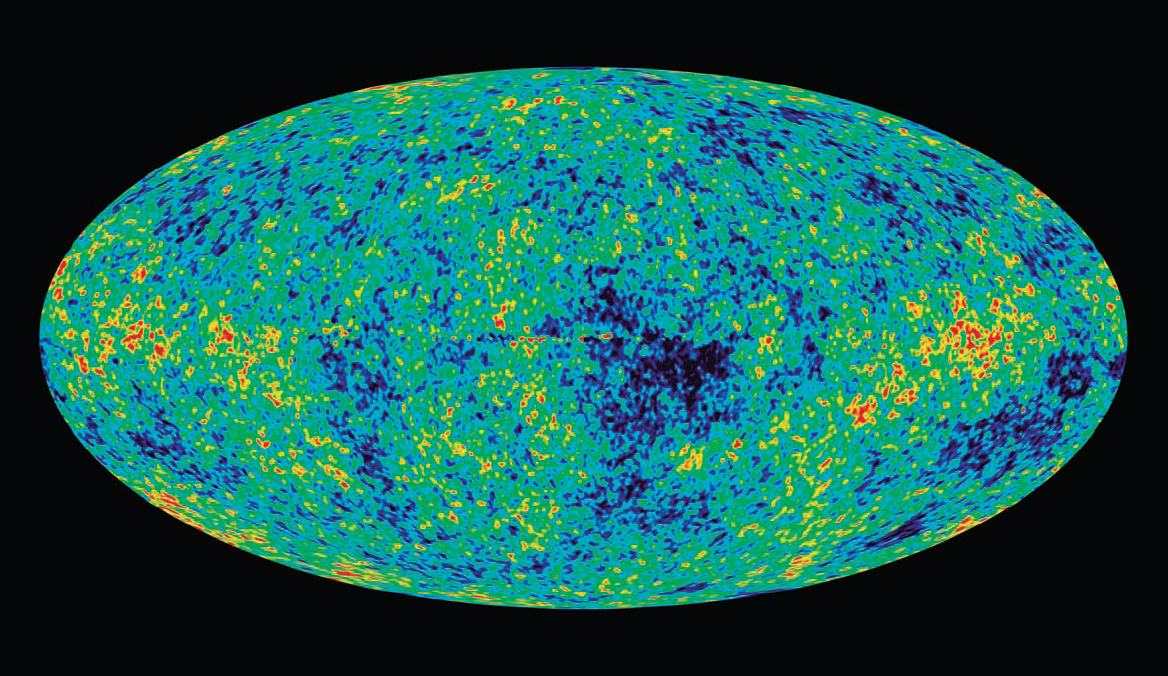

This color-coded image is effectively a photograph of the universe when it was only 379 000 y old, which was about 13.7 × 109 y ago. This is what you would have seen then as you looked away in all directions (the view has been condensed to this oval). Patches of light from collections of atoms stretch across the “sky,” but galaxies, stars, and planets have not yet formed.
How can such a photograph of the early universe be taken?
The answer is in this chapter.
44-1 What Is Physics?
Physicists often refer to the theories of relativity and quantum physics as “modern physics,” to distinguish them from the theories of Newtonian mechanics and Maxwellian electromagnetism, which are lumped together as “classical physics.” As the years go by, the word “modern” seems less and less appropriate for theories whose foundations were laid down in the opening years of the 20th century. Nevertheless, the label hangs on.
In this closing chapter we consider two lines of investigation that are truly “modern” but at the same time have the most ancient of roots. They center around two deceptively simple questions:
What is the universe made of?
How did the universe come to be the way it is?
Progress in answering these questions has been rapid in the last few decades.
Many new insights are based on ...
Get Fundamentals of Physics now with the O’Reilly learning platform.
O’Reilly members experience books, live events, courses curated by job role, and more from O’Reilly and nearly 200 top publishers.

